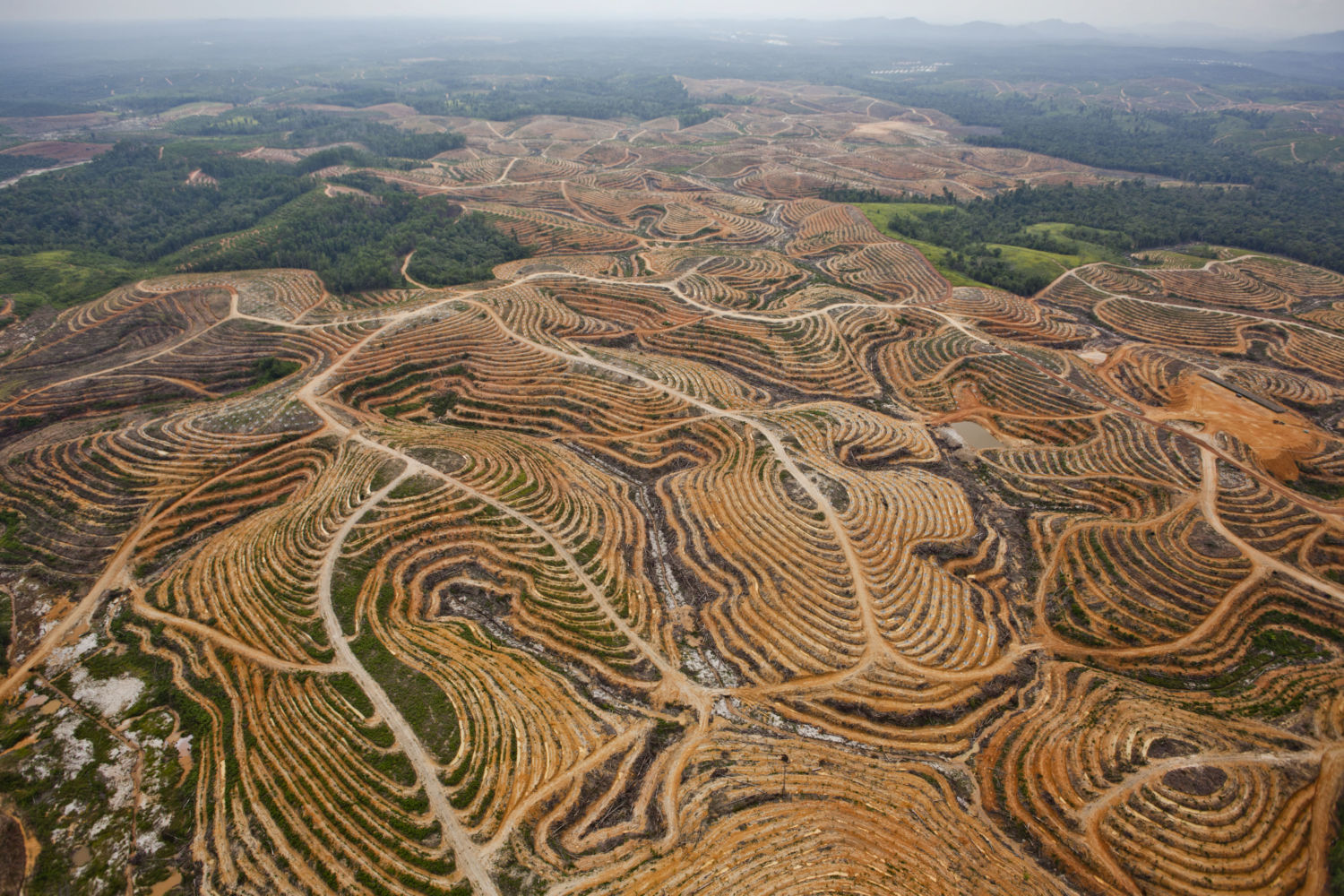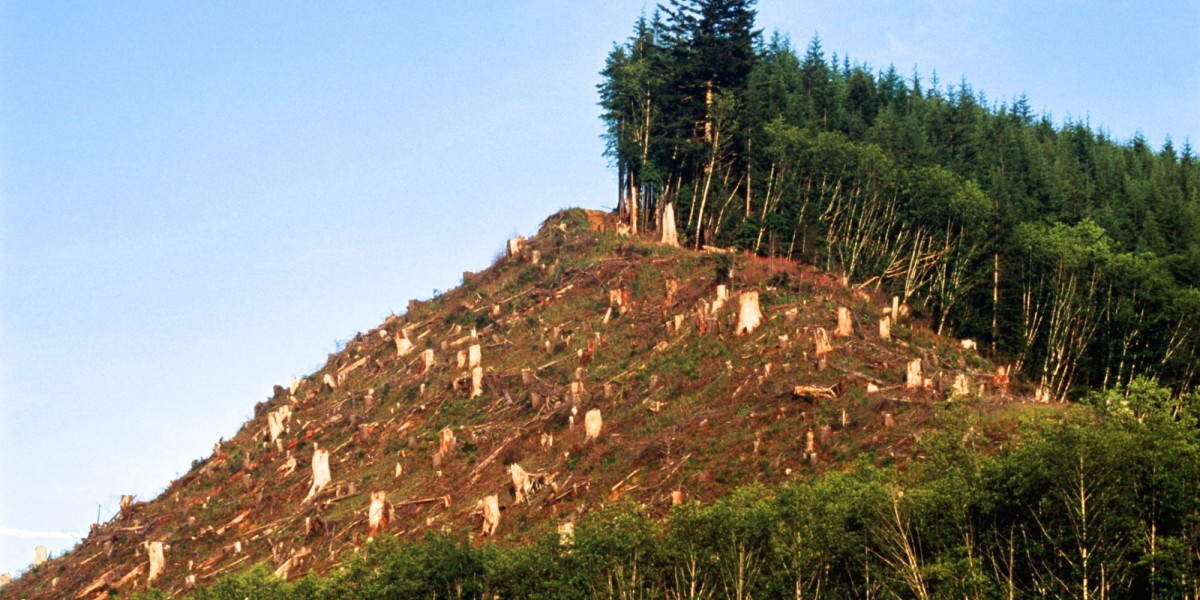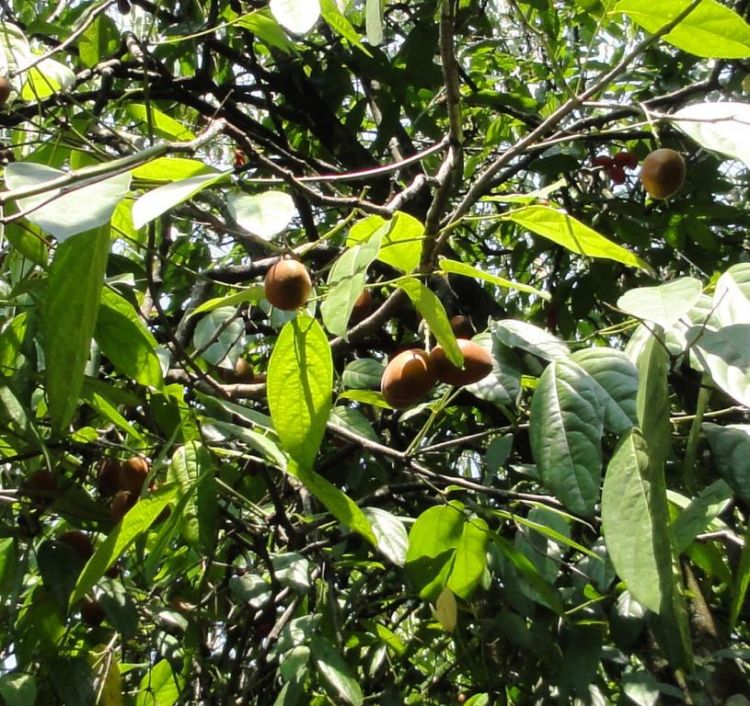Indonesia lost 840,000 hectares of forest in 2012 compared to 460,000 hectares in Brazil, despite its forest being a quarter the size of the Amazon rain forest.
Palm oil land clearing in central Kalimantan
Deforestation in Indonesia involves the long-term loss of forests and foliage across much of the country; it has had massive environmental and social impacts. Indonesia is home to some of the most biologically diverse forests in the world and ranks third in number of species behind Brazil and the Democratic Republic of Congo.
As late as 1900, Indonesia was still a densely forested country: forests represented 84 percent of the total land area. Deforestation intensified in the 1970s and has accelerated further since then. The estimated forest cover of 170 million hectares around 1900 decreased to less than 100 million hectares by the end of the 20th century. In 2008, it was estimated that tropical rainforests in Indonesia would be logged out in a decade. Of the total logging in Indonesia, up to 80% is reported to be performed illegally.
Large areas of forest in Indonesia have been cleared by large multinational pulp companies, (you can get some pulp companies names on Wikipedia) and replaced by plantations. Forests are often burned by farmers and plantation owners. Another major source of deforestation is the logging industry, driven by demand from China and Japan. Agricultural development and transmigration programs moved large populations into rainforest areas, further increasing deforestation rates.
One of the many victims of deforestation - Sumatra.
Indonesia has greatly under-reported how much primary rainforest it is cutting down, according to the government's former head of forestry data gathering.
UN and official government figures have maintained that the country with the third biggest stretch of tropical forest after the Amazon and Congo was losing 310,000 hectares of all its forest a year between 2000 and 2005, increasing to 690,000 hectares annually from 2006 to 2010.
Exact rates of Indonesian deforestation have varied with different figures quoted by researchers and government, but a new study, which claims to be the most comprehensive yet, suggests that nearly twice as much primary forest is being cut down as in Brazil, the historical global leader.
Belinda Arunarwati Margono, who was in charge of data gathering at Indonesia's Ministry of Forestry for seven years and is now on secondment at South Dakota university, calculates that nearly 1m extra hectares of primary forest may have been felled in the last 12 years than was recorded officially.
In a paper in the journal Nature Climate Change, Margano says primary forest losses totaled 6.02m hectares between 2000 and 2012, increasing by around 47,600 hectares a year over this time. Because previous estimates of forest loss have included the clearing of pulp plantations and oil palm estates the real loss of primary forest has until now been obscured.
In 2012, she calculates, Indonesia lost 840,000 hectares of its primary forest, compared to 460,000 hectares in Brazil, despite its forest being roughly a quarter the size of the Amazon. This, says Margano, was the most lost by any country.
The new figures are significant because Indonesia is the world's third-largest producer of greenhouse gases behind China and the US, with 85% of its emissions coming from forest destruction and degradation. Primary forests are the largest above-ground carbon stores in the world.
Margano said that the discrepancies between the figures were due to technical and bureaucratic problems in Indonesia and better information becoming available. "Government cannot share data fully because of laws. There is no transparency", she said.
But the figures are potentially embarrassing because they suggest that a 2011 moratorium on granting new licenses for clearing or logging of primary forests and carbon-rich peatlands could have been a driver for deforestation.
Margono and co-author Matthew Hansen said the new data from remote sensing showed that the extra losses came largely from the felling of primary forest in wetlands and in government-protected areas.
Forest clearing, step by step.
Source: the guardian, wikipedia, forest studies and other online articles.











